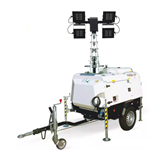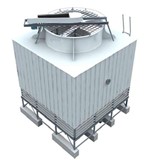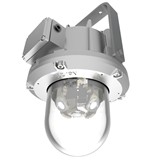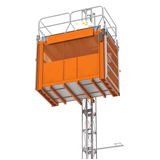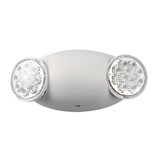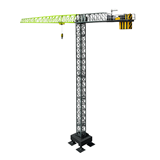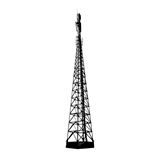Key Takeaways
- Lighting Tower Prices: Expect to pay between $8,000 and $40,000+ in Australia depending on size, features, and power source.
- Types Available: Choose from diesel, solar, hybrid, and battery-powered towers based on your project's needs and sustainability goals.
- Running Costs: Diesel lighting towers typically consume around 0.5–2 litres of fuel per hour depending on the model and load.
- Financing Options: Equipment finance rates for lighting towers start from around 6–9% p.a. as of 2025, depending on the lender and your business profile.
- Compliance: Must meet Australian Standards (AS/NZS 3000) for electrical safety and, where applicable, emissions standards under Tier 4 Final for diesel engines.
Introduction
Whether you're running a construction site, mining operation, event, or emergency service in Australia, a reliable lighting tower is crucial for nighttime operations. With various technologies, price ranges, and specifications available, understanding the market is key to securing the right tower for your needs — without overpaying or facing compliance issues.
This guide is designed to walk you through everything you need to know when purchasing a lighting tower in Australia in 2025.
Types of Lighting Towers
Lighting towers differ based on their power source, construction, and intended usage:
1. Diesel-powered lighting towers
- Most common for construction and mining.
- Run times up to 100+ hours per tank.
- Suitable for remote areas.
2. Solar lighting towers
- Zero emissions and very low maintenance.
- Best for environmentally sensitive sites or long-term projects.
- Higher initial cost but lower operational expenses.
3. Hybrid lighting towers
- Combine solar and diesel for flexible use.
- Reduces fuel usage by up to 60%.
- Ideal for intermittent use or fluctuating weather conditions.
4. Battery-powered lighting towers
- Quiet and ideal for urban events or hospitality settings.
- Limited to 8–24 hours per charge, depending on the model.
Lighting Tower Prices in Australia
Lighting tower prices in Australia vary depending on the type, features, and power source. Here's a breakdown to guide your budgeting:
- Diesel-powered lighting towers typically cost between $8,000 and $25,000.
- Solar lighting towers generally range from $15,000 to $35,000.
- Hybrid lighting towers usually fall between $18,000 and $40,000.
- Battery-powered lighting towers are priced around $12,000 to $28,000.
Note: Premium models with advanced features like remote monitoring, automatic mast lowering, or heavy-duty trailers can exceed $45,000.
Key Features to Consider
When comparing lighting towers, look for:
- Mast height: Usually between 6m and 12m.
- Lumens output: Modern towers provide up to 360,000+ lumens.
- Run time: Diesel models range from 50–120 hours per refuel.
- Mobility: Trailer-mounted vs. skid-mounted.
- Wind resistance: Essential for open-site applications.
- Ease of maintenance: Accessible engine and generator compartments.
- Remote monitoring: Available in newer models for fleet management.
Operations and Maintenance
Proper operation and maintenance extend the lifespan of your lighting tower:
- Daily checks: Fuel, oil, coolant, and lighting inspections.
- Monthly maintenance: Battery condition, mast lubrication, generator testing.
- Annual servicing: Engine overhauls and generator inspections.
Tip: Diesel towers require more frequent servicing compared to solar and battery units.
- Fuel Efficiency: Diesel-powered units are fuel-hungry, requiring more frequent refueling, whereas solar and hybrid models can significantly reduce fuel costs over time. However, battery-powered models are dependent on their battery life and may require more frequent charging.
- Maintenance Needs: Diesel lighting towers require regular engine and filter maintenance, while hybrid models have more complex maintenance needs due to their dual systems. Solar-powered models, while requiring minimal maintenance, might need occasional solar panel cleaning and battery checks.
- Power Output & Runtime: Larger projects may require diesel or hybrid lighting towers, while battery-powered or solar models may be more appropriate for temporary lighting needs.
Pro Tip: Before purchasing, estimate how many hours of lighting you need each day and whether your project is located in an area with good sunlight. This can help determine whether you should opt for a solar or diesel-powered model.
Power Requirements
- Assess your project’s lighting needs by considering the wattage of the floodlights you plan to use. For example, a 1000W floodlight typically covers an area of approximately 30–40 square metres. Multiply this by the number of floodlights you need to determine your total power requirement.
- Ensure that the lighting tower’s generator or battery pack can handle your required power output for the full duration of the project.
Quick Power Estimator:
- How many floodlights do you need?
- What is the wattage of each floodlight?
- How many hours of operation are required each day?
Common Parts to Maintain and Replace
- Light bulbs/LED modules
- Hydraulic masts or winches
- Batteries (solar/battery models)
- Filters and belts (diesel engines)
Spare parts availability is vital — opt for brands with strong Australian support networks.
Financing a Lighting Tower in Australia
Many businesses prefer financing instead of outright purchase:
- Equipment loan: Secure finance with the lighting tower as collateral.
- Chattel mortgage: Popular for businesses wanting immediate ownership and tax advantages.
- Rental or lease: Short-term projects may benefit from renting at rates around $100–$400/week depending on the tower.
Warranty and After-Sales Support
Expect the following warranty standards:
- Engine and generator warranty: Typically 2–5 years depending on manufacturer.
- Lighting system warranty: Around 5 years, especially for LED towers.
- Structural warranty: Masts and chassis often covered for up to 10 years.
Make sure to choose a supplier who provides accessible service centres across Australia.
Compliance and Certification in Australia
Lighting towers in Australia must adhere to:
- AS/NZS 3000: Electrical wiring standards for safety compliance.
- AS 2790: Standards for electricity generating sets.
- Tier 4 Final emissions standards: For diesel engines to reduce environmental impact.
- Local Council Regulations: Noise limits and light spill regulations can vary by region.
Additionally, if you're purchasing lighting towers for mine sites or major infrastructure projects, you may need units with:
- MDG 15 Compliance: Guideline for mobile and transportable equipment in mines.
Always confirm that your lighting tower is properly certified before purchase.
Choosing the right Lighting Tower for your application
Selecting the correct lighting tower depends heavily on your site's specific needs. Here’s a quick guide to help you choose:
- Construction sites: Diesel-powered towers are ideal for their ruggedness and extended runtime.
- Mining operations: Hybrid or solar towers can dramatically reduce fuel usage and maintenance in remote areas.
- Public events and festivals: Battery or solar lighting towers are preferred for low noise and eco-friendly operations.
- Emergency and disaster response: Fast-deploying diesel towers are favoured for reliability under unpredictable conditions.
- Urban work sites: Low-noise, battery-powered towers help meet council noise regulations.
Common Questions Buyers Ask
How many hours will a lighting tower run on a full tank?
- Diesel models generally offer between 50–120 hours, depending on light load and tank size.
Are solar lighting towers worth it in Australia?
- Yes — especially in sunny areas like Queensland, NSW, WA, and NT where sunlight is abundant and diesel prices are high.
Can I use lighting towers in residential areas?
- Yes, but ensure the model complies with local council noise and light regulations. Battery and solar units are preferred for urban settings.
How do I choose the right mast height?
- For construction, 8–10m masts are common. For events or small sites, 6–8m is often sufficient.
Should I rent or buy a lighting tower?
- If the project is short-term (under 6 months), renting is usually more cost-effective. For ongoing use, buying provides better value.
Final Thoughts
Choosing the right lighting tower for your needs involves much more than just looking at the price tag. Consider operation costs, compliance, maintenance ease, and long-term value. Whether you choose diesel, solar, hybrid, or battery, selecting a trusted Australian supplier with proper certifications and support can save you significant time and money down the track.


